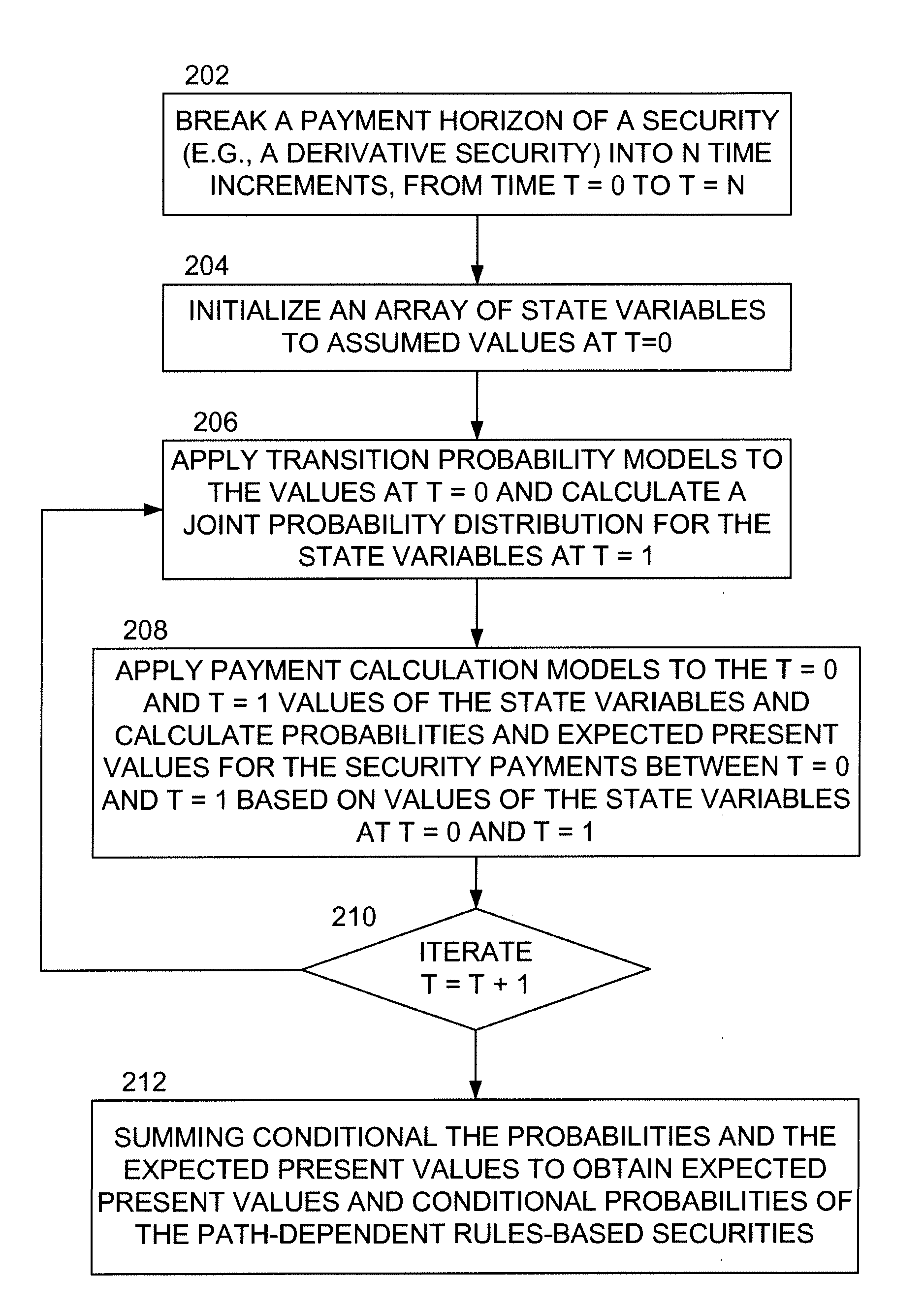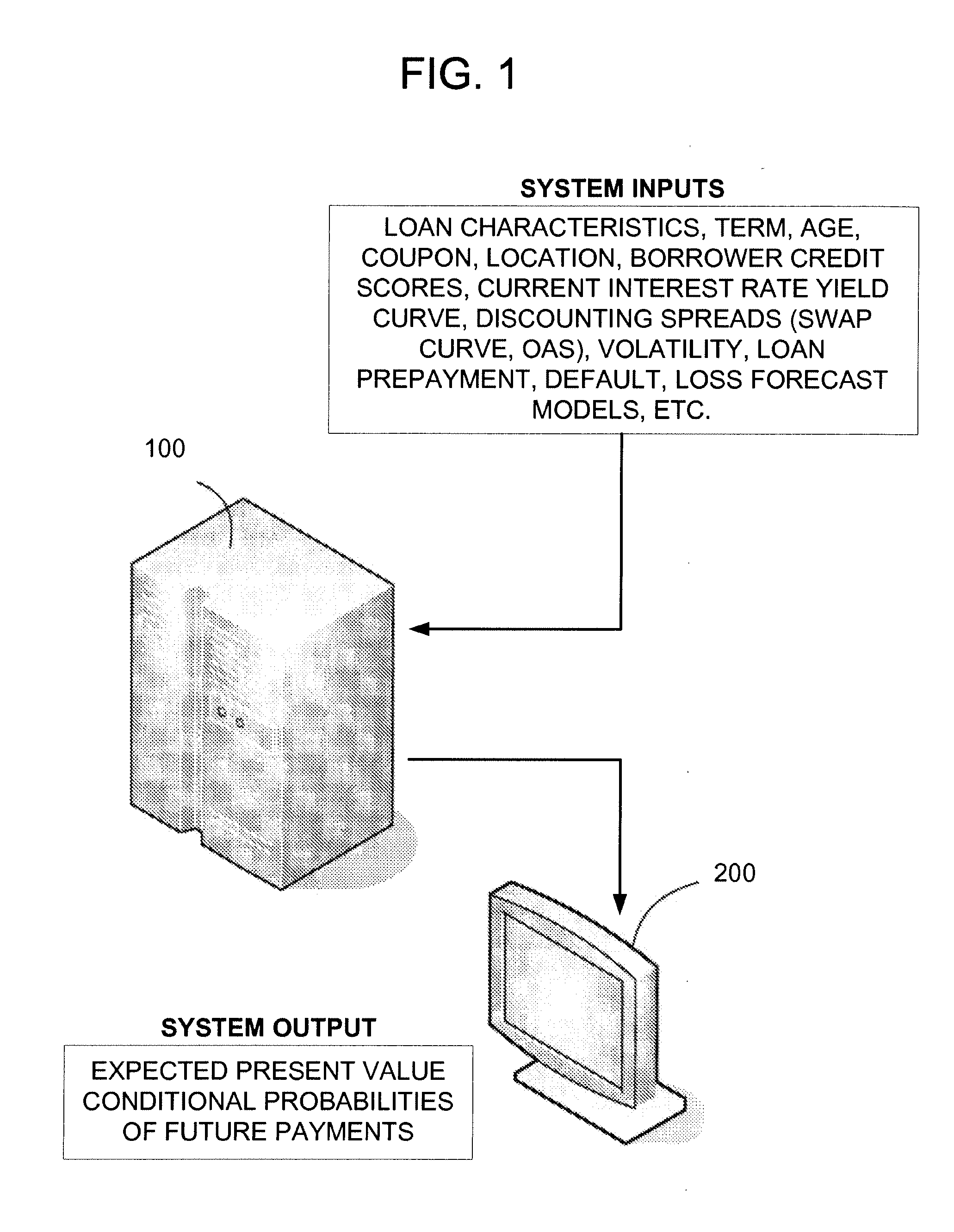Methods and apparatus for iterative conditional probability calculation methods for financial instruments with path-dependent payment structures
a technology of conditional probability and financial instruments, applied in the direction of instruments, knowledge representation, pulse technique, etc., to achieve the effect of significant differences in results
- Summary
- Abstract
- Description
- Claims
- Application Information
AI Technical Summary
Benefits of technology
Problems solved by technology
Method used
Image
Examples
Embodiment Construction
[0040]In the following description, for the purposes of explanation, specific numbers, materials and configurations are set forth in order to provide a thorough understanding of the invention. It will be apparent, however, to a person of ordinary skill in the art, that these specific details are merely exemplary embodiments of the invention. In some instances, well known features may be omitted or simplified so as not to obscure the present invention. Furthermore, reference in the specification to “one embodiment” or “an embodiment” is not meant to limit the scope of the invention, but instead merely provides an example of a particular feature, structure or characteristic of the invention described in connection with the embodiment. Insofar as various embodiments are described herein, the appearances of the phase “in an embodiment” in various places in the specification are not meant to refer to a single or same embodiment.
[0041]One or more embodiments of the present invention are g...
PUM
 Login to View More
Login to View More Abstract
Description
Claims
Application Information
 Login to View More
Login to View More - R&D
- Intellectual Property
- Life Sciences
- Materials
- Tech Scout
- Unparalleled Data Quality
- Higher Quality Content
- 60% Fewer Hallucinations
Browse by: Latest US Patents, China's latest patents, Technical Efficacy Thesaurus, Application Domain, Technology Topic, Popular Technical Reports.
© 2025 PatSnap. All rights reserved.Legal|Privacy policy|Modern Slavery Act Transparency Statement|Sitemap|About US| Contact US: help@patsnap.com



